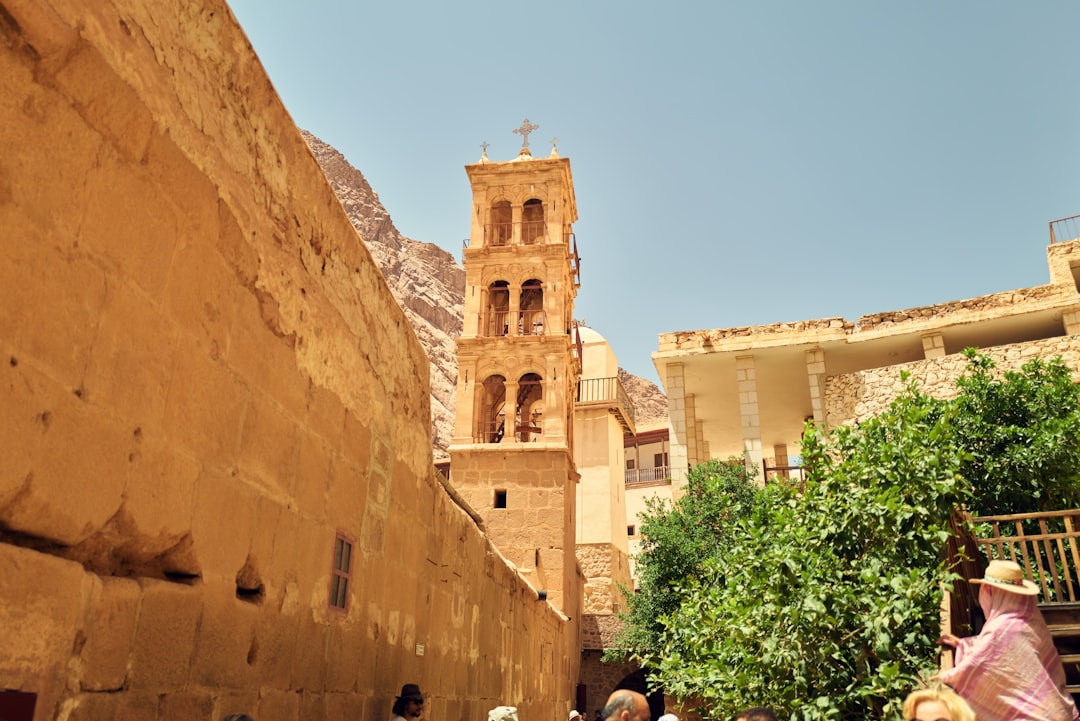The Bab-el-Mandeb Strait, a narrow waterway connecting the Red Sea to the Gulf of Aden, serves as a critical juncture for maritime navigation. This strait, which translates to “Gate of Tears” in Arabic, is not only a geographical landmark but also a vital artery for international trade and military strategy. Stretching approximately 20 miles at its narrowest point, the strait separates the Arabian Peninsula from the Horn of Africa, specifically Yemen from Djibouti and Eritrea.
Its strategic location has made it a focal point for various historical events, including trade routes that date back to ancient civilizations. The Bab-el-Mandeb Strait’s significance extends beyond its physical dimensions; it is a gateway through which a substantial portion of the world’s maritime traffic passes. The strait facilitates the movement of goods between Europe, Asia, and Africa, making it an essential corridor for global commerce.
As such, understanding the Bab-el-Mandeb Strait’s role in contemporary geopolitics and economics is crucial for comprehending the dynamics of international relations in the region.
Key Takeaways
- The Bab-el-Mandeb Strait is a crucial maritime chokepoint connecting the Red Sea to the Gulf of Aden and the Indian Ocean.
- The strait holds significant geopolitical importance due to its location at the crossroads of major international shipping routes and its proximity to conflict-prone regions.
- The Bab-el-Mandeb serves as a vital trade route for global commerce, particularly for the transportation of oil and natural gas from the Middle East to Europe and North America.
- The strait is of strategic military significance as it provides access to key naval bases and facilitates power projection in the region.
- Security challenges in the Bab-el-Mandeb, including piracy and terrorism, pose risks to international shipping and require coordinated efforts from regional and international actors.
Geopolitical significance of the Bab-el-Mandeb Strait
The geopolitical importance of the Bab-el-Mandeb Strait cannot be overstated. It serves as a critical chokepoint in global shipping routes, with an estimated 10% of the world’s trade passing through its waters.
Control over the strait can significantly influence trade flows and energy supplies, making it a coveted asset in the geopolitical landscape. In recent years, tensions in the region have heightened due to various conflicts and rivalries. The ongoing civil war in Yemen has drawn in multiple actors, including Saudi Arabia and Iran, each vying for influence over this vital waterway.
The strait’s proximity to key shipping lanes has made it a battleground for proxy conflicts, further complicating the geopolitical landscape. As nations recognize the Bab-el-Mandeb Strait’s strategic value, it becomes increasingly clear that its control is intertwined with broader regional stability and security.
Economic importance of the Bab-el-Mandeb Strait

The economic implications of the Bab-el-Mandeb Strait are profound, as it serves as a crucial conduit for oil and gas shipments from the Middle East to global markets. Approximately 4 million barrels of oil per day transit through this strait, underscoring its role in energy security for many nations. The economic vitality of countries reliant on these shipments hinges on the uninterrupted flow of resources through this narrow passage.
Moreover, the Bab-el-Mandeb Strait is integral to global supply chains. Goods transported from Asia to Europe often traverse this route, making it essential for international trade. Disruptions in this waterway can lead to significant economic repercussions, affecting not only regional economies but also global markets.
The economic stakes associated with the Bab-el-Mandeb Strait highlight its importance as a linchpin in the interconnected web of global commerce.
Strategic military significance of the Bab-el-Mandeb Strait
| Aspect | Details |
|---|---|
| Location | Connects the Red Sea to the Gulf of Aden and the Arabian Sea |
| Strategic Importance | Critical chokepoint for international maritime trade |
| Military Significance | Control of the strait allows for influence over shipping lanes and naval operations |
| Security Concerns | Piracy and terrorism threats in the region |
| International Involvement | Naval patrols and security cooperation among various countries |
The military significance of the Bab-el-Mandeb Strait is equally noteworthy. Given its status as a vital maritime chokepoint, control over this strait has become a strategic objective for various military powers. The United States, for instance, maintains a naval presence in the region to ensure freedom of navigation and protect vital shipping lanes from potential threats.
Additionally, regional powers have recognized the military implications of the Bab-el-Mandeb Strait. Countries such as Saudi Arabia and Egypt have invested in enhancing their naval capabilities to secure their interests in this critical waterway. The strait’s strategic military importance is further underscored by its role in counter-piracy operations and anti-terrorism efforts, as instability in nearby regions can spill over into maritime security challenges.
Impact of the Bab-el-Mandeb Strait on global trade
The impact of the Bab-el-Mandeb Strait on global trade is profound and multifaceted. As one of the busiest maritime routes in the world, it facilitates the movement of goods between continents, linking economies and markets in ways that are often taken for granted. The strait serves as a vital link for shipping companies, allowing them to transport products efficiently from Asia to Europe and beyond.
However, any disruption in this critical waterway can have cascading effects on global supply chains. For instance, during periods of heightened conflict or instability in Yemen or surrounding areas, shipping routes may be threatened, leading to increased shipping costs and delays. Such disruptions can ripple through economies worldwide, affecting everything from oil prices to consumer goods availability.
The Bab-el-Mandeb Strait’s role as a linchpin in global trade underscores its significance in maintaining economic stability.
Security challenges in the Bab-el-Mandeb Strait

The Bab-el-Mandeb Strait faces numerous security challenges that threaten its stability and safety. Piracy has historically been a significant concern in these waters, with Somali pirates targeting commercial vessels transiting through the strait. Although international naval coalitions have made strides in combating piracy, sporadic incidents continue to pose risks to shipping companies and their crews.
In addition to piracy, geopolitical tensions exacerbate security challenges in the region. The ongoing conflict in Yemen has led to increased military activity and instability along the strait’s shores. The presence of various armed groups and militias complicates efforts to ensure safe passage for commercial vessels.
As nations grapple with these security challenges, maintaining a secure environment in the Bab-el-Mandeb Strait remains a top priority for regional and international stakeholders.
Role of international actors in the Bab-el-Mandeb Strait
International actors play a crucial role in shaping the dynamics surrounding the Bab-el-Mandeb Strait. The United States has historically maintained a naval presence in the region to safeguard maritime security and ensure freedom of navigation. This commitment reflects broader strategic interests in countering potential threats from state and non-state actors alike.
Moreover, regional organizations such as the Arab League and the African Union have sought to address security concerns related to the Bab-el-Mandeb Strait. Collaborative efforts among member states aim to enhance maritime security and promote stability in this vital waterway. Additionally, partnerships with international organizations like NATO have emerged to bolster collective security measures against piracy and other threats.
Environmental concerns in the Bab-el-Mandeb Strait
Environmental concerns surrounding the Bab-el-Mandeb Strait are increasingly coming to light as maritime traffic continues to grow. The delicate marine ecosystem in this region faces threats from oil spills, pollution, and overfishing. The potential for environmental degradation poses risks not only to marine life but also to local communities that depend on these waters for their livelihoods.
Furthermore, climate change exacerbates existing environmental challenges in the Bab-el-Mandeb Strait. Rising sea levels and changing weather patterns can impact navigation routes and increase vulnerability to natural disasters. As awareness of these environmental issues grows, there is an urgent need for collaborative efforts among nations to protect this vital waterway and its surrounding ecosystems.
Potential for regional cooperation in the Bab-el-Mandeb Strait
Despite the myriad challenges facing the Bab-el-Mandeb Strait, there exists significant potential for regional cooperation among nations bordering this critical waterway. Collaborative initiatives aimed at enhancing maritime security could foster stability and promote economic development in the region. By working together to address common threats such as piracy and environmental degradation, countries can create a more secure environment for trade and navigation.
Regional organizations can play a pivotal role in facilitating dialogue and cooperation among member states.
By prioritizing collaboration over competition, stakeholders can harness the potential of the Bab-el-Mandeb Strait as a shared resource that benefits all parties involved.
Future developments in the Bab-el-Mandeb Strait
Looking ahead, several developments could shape the future of the Bab-el-Mandeb Strait. As global trade continues to evolve, shifts in shipping patterns may impact traffic through this vital waterway. The rise of alternative routes or changes in energy supply dynamics could alter how nations approach their interests in the strait.
Additionally, ongoing geopolitical tensions may prompt nations to reassess their strategies regarding military presence and engagement in the region. As countries navigate complex relationships with one another, maintaining stability in the Bab-el-Mandeb Strait will remain a priority for both regional powers and international actors alike.
The enduring significance of the Bab-el-Mandeb Strait
In conclusion, the Bab-el-Mandeb Strait stands as a testament to the intricate interplay between geography, geopolitics, economics, and security on a global scale. Its strategic location makes it an indispensable corridor for international trade while simultaneously serving as a focal point for military interests and regional conflicts. As nations grapple with security challenges and environmental concerns surrounding this vital waterway, collaboration emerges as a key theme for ensuring its continued significance.
The future of the Bab-el-Mandeb Strait will undoubtedly be shaped by ongoing developments within regional dynamics and global trade patterns. However, its enduring importance as a gateway connecting continents ensures that it will remain at the forefront of international discourse for years to come. As stakeholders recognize both its challenges and opportunities, there lies potential for cooperation that could enhance stability and prosperity not only within the region but across global markets as well.
The Bab-el-Mandeb Strait, a critical maritime chokepoint connecting the Red Sea to the Gulf of Aden, plays a significant role in global trade and geopolitics. For those interested in exploring more about the geographical and strategic importance of such locations, an insightful article can be found on MyGeoQuest. This resource delves into various geographical wonders and their implications on global dynamics. To learn more, you can visit the article by clicking on this link.
WATCH NOW! Unlocking Disaster: 7 Choke Points That Could Fracture Our Connected World Overnight
FAQs
What is Bab-el-Mandeb?
Bab-el-Mandeb is a strait located between Yemen on the Arabian Peninsula and Djibouti and Eritrea in the Horn of Africa. It connects the Red Sea to the Gulf of Aden and is a strategic waterway for international shipping.
What is the significance of Bab-el-Mandeb?
Bab-el-Mandeb is a crucial chokepoint for maritime trade, as it is one of the world’s busiest and most important shipping lanes. It is a key route for oil tankers and cargo ships traveling between Europe, Asia, and the Middle East.
How wide is Bab-el-Mandeb?
The strait is approximately 18 miles (29 kilometers) wide at its narrowest point, making it a relatively narrow passage for large vessels.
What are the potential risks and challenges associated with Bab-el-Mandeb?
The strait is vulnerable to piracy, political instability, and military tensions in the region. Additionally, the narrowness of the strait makes it susceptible to blockades or disruptions, which could have significant impacts on global trade and energy supplies.
What countries border Bab-el-Mandeb?
Bab-el-Mandeb is bordered by Yemen to the north, and Djibouti and Eritrea to the south. These countries have strategic interests in the control and security of the strait.
